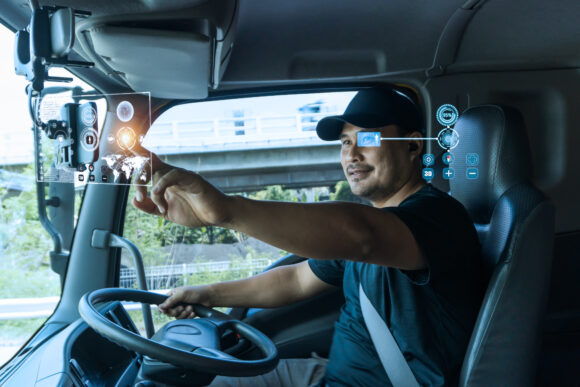Generative AI is the next big technology trend in just about every industry. But for such a people-centric industry, how will ChatGPT, DALL-E 2 and Bing AI truly impact the insurance sector?
Just ask ChatGPT, as some insurance pros have done: When prompted, ChatGPT says it will have a positive impact on the industry. And if you ask a human, I would agree, with conditions. Generative AI’s success in insurance applications will really depend upon who is using the technology and its specific use cases.
Conversational Customer Service
The greatest and most direct opportunity for generative AI in insurance is in customer service applications. And the ultimate win in insurance customer service is processing claims. While claims adjusting is complex and requires human interface, there’s room for automation.
AI models excel at processing repetitive, predictable queries to readily assist in increasing response speed and — in auto insurance — how quickly drivers can get back on the road. AI can reduce friction around part ordering and acceleration of repair, and even aid adjusters in total loss decisioning. It can also respond quickly in natural, conversational language, which helps a claims representative solve stressful problems.
Insurtechs have been improving AI models for a long time, but AI has yet to really penetrate the commercial trucking sector. Even though, for example, image-based AI could capture exterior damage and risk potential for different types of impacts on commercial vehicles to improve the claims process.
Expanding Prospects, Growth with AI
There is an untapped opportunity for brokers in the commercial trucking insurance sector as they prospect new business and offer quotes.
There is a lot to learn, especially for agents writing small commercial policies. If brokers aren’t familiar with a particular class of business, they don’t prospect it. If brokers receive cold inbound leads, they may struggle to nail the details of a new type of policy.
For example, a broker more familiar with property insurance may not know to request a driver roster when writing a trucking insurance policy. Situations like these become more navigable with AI assistance.
In the future, generative AI could act as a coach for agents by answering questions and helping them understand the long list of options prompted by quoting engines. This technology can help smaller agents grow by expanding into other industries effectively rather than through trial and error, which would in turn give niche policyholders access to more coverage options.
Supply Chain and Demand Prediction
Keeping trucks on the road is an essential part of ironing out recent supply chain issues. But the stress drivers face working long hours to fulfill demand, on top of
complex and shifting delivery routes, adds up to increased safety risks for truckers and problems for insurers.
Generative AI could play a role in lowering risks for truck drivers by assisting them along their regular and demand-driven routes.
For example, hotshot drivers run time-sensitive deliveries using lighter vehicles and tow trailers. With delivery times a priority, truckers could rely on technology for more than just route guidance. Generative AI could step in to balance a driver’s delivery destinations with time, traffic, road safety and even vehicle and service data to track a truck’s wear and tear.
For a hotshot driver making a delivery in Chicago, the route through the city instead of around it may have completely different risks and schedules. As truckers go along their routes, an interactive, personalized AI experience could make the difference between a safe, on-time delivery and an accident.
Going a step further, hotshot drivers make their job and delivery decisions based on demand — unbound to one factory or job site. With enough datapoints, AI-driven demand prediction built into a trucker’s tech stack could be an invaluable tool for this type of driver. This puts more money in drivers’ pockets, reduces risk, decreases claims and improves the strain on the supply chain — an all-around win for truckers, suppliers and insurers.
Driver Health and Safety
In addition to protecting drivers, generative AI could improve their overall health through personalized experiences.
The trucking profession is challenging, especially for semi drivers on long haul routes. Research by the Centers for Disease Control and Prevention (CDC) reveals long-haul truckers have higher rates of heart disease, diabetes, hypertension and obesity than the average U.S. working adult.
Beholden to tight delivery schedules and strict hours of service caps, truckers sometimes have limited options for essential daily activities like eating, sleeping and showering.
Generative AI could soon offer drivers more sophisticated recommendations for their stops, factoring in personal and route data, traffic and map information, and lifestyle factors.
10 Years Down the Road
The question remains: Will generative AI completely upend the insurance industry?
As with any new technology, the early adopters could be on the bleeding edge of this change, though it will take time. Instead, we should think about how to support and accelerate this digital transformation.
In the trucking sector, the first major barrier is hardware.
Trucks — especially semis — are expensive to replace and built to last with fleets using an average seven- to eight-year replacement cycle. It takes much longer for new technologies to penetrate large commercial vehicles than their automobile counterparts.
Features that may become standard in lite trucks and autos by 2030 may not fully be adopted by the commercial trucking industry by 2045, for example. Although there is legislation addressing issues of fuel efficiency, emissions and safety tech that will be required for trucks, expect it to take extra time to fully penetrate a fleet’s physical system.
For process-oriented technology, like systems that help claims adjusters and brokers, one of the biggest challenges for any AI model is the lack of data.
There is much more available data relating to personal autos — insurtechs have been at it for longer, and there are more vehicles from which to collect data. In commercial trucking, data to train AI models is lacking and will take some time to build.
With more sensors on a vehicle, insurers can operate beyond one simple row of static data for each vehicle to better understand risk, driver safety, vehicle utilization over time, and ultimately improve outcomes on the road.
Topics InsurTech Commercial Lines Data Driven Artificial Intelligence Trucking
Was this article valuable?
Here are more articles you may enjoy.



 Don’t Forget Tariff Impacts on Workers’ Compensation: Berkley
Don’t Forget Tariff Impacts on Workers’ Compensation: Berkley  Questions About How a Deputy’s Stepson Became the Accused Gunman at FSU Shooting
Questions About How a Deputy’s Stepson Became the Accused Gunman at FSU Shooting  South Florida Insurance Broker Pleads Guilty to Fraud in $133M ACA Enrollment Scheme
South Florida Insurance Broker Pleads Guilty to Fraud in $133M ACA Enrollment Scheme  State Farm Wins Dismissal of Class Action Over Xactimate Software
State Farm Wins Dismissal of Class Action Over Xactimate Software 



